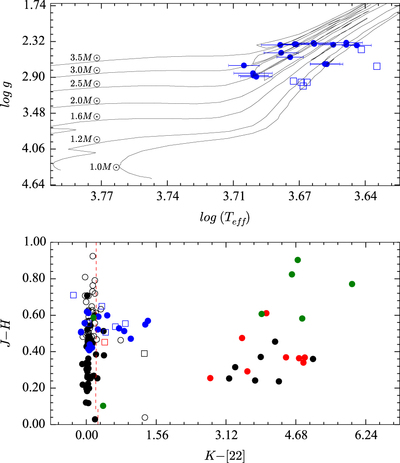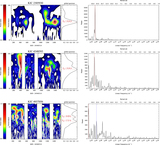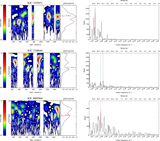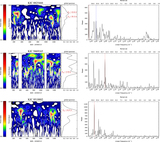Image Details

Caption: Figure 1.
Top: distribution of the 23 Kepler rapidly rotating giants in the HR diagram. Evolutionary tracks at [Fe/H] = 0 are from Girardi et al. (2000). Circles and open squares refer to stars from Pinsonneault et al. (2014) and Tayar et al. (2015), respectively. Bottom: color–color diagram ﹩J-H﹩ vs. ﹩K-[22]﹩ for the referred 23 giants (symbols as in the top panel), main-sequence stars with planets from Morales et al. (2012; green circles) and from Lawler & Gladman (2012; red circles), subgiant (black filled circles) and giant (black open circles) stars with planets from the Extrasolar Exoplanets Encyclopaedia. Fk Comae and HD 199178 are indicated by red and black open squares, respectively. The red dashed line gives the criterion to define WISE 22 μm excess from Wu et al. (2013), according to which stellar excess candidates should populate the region with ﹩K-[22]﹩ larger than about 0.2.
Copyright and Terms & Conditions
© 2015. The American Astronomical Society. All rights reserved.






